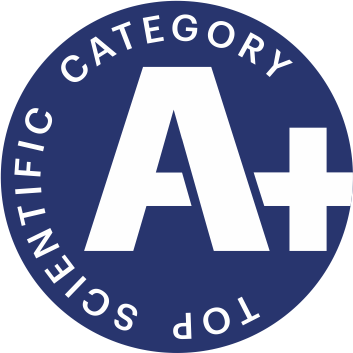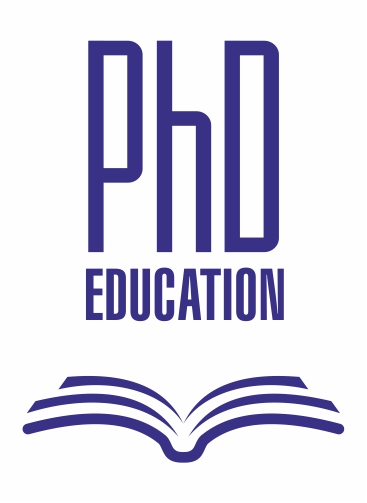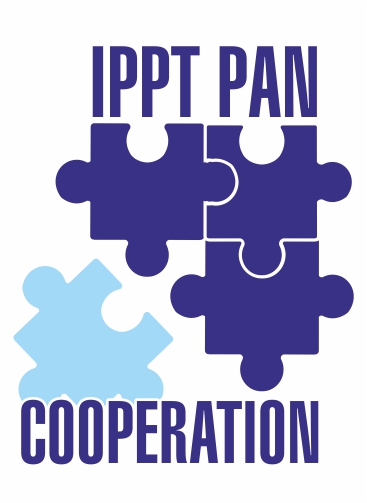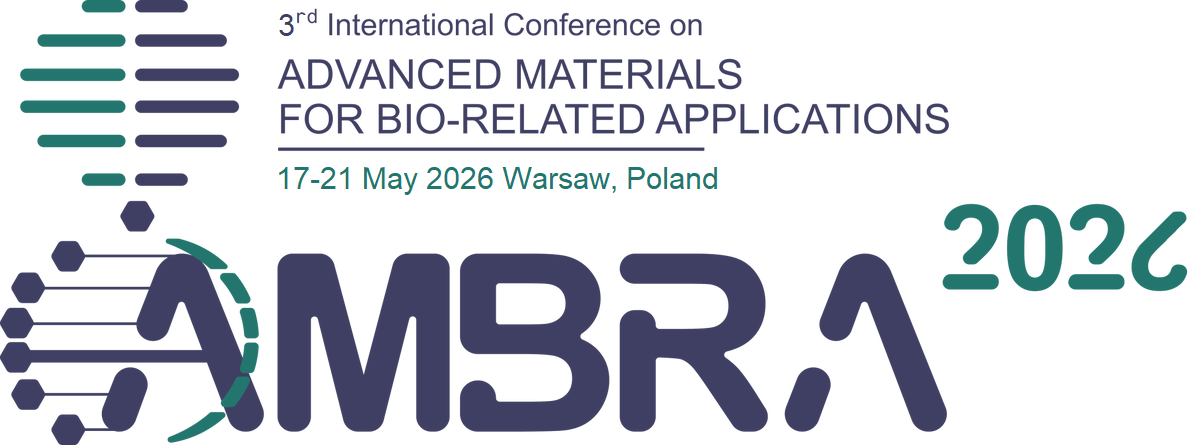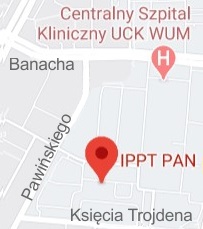| 1. |
Du J.♦, Rybak D., Su Q.♦, Wang Q.♦, Yuan Q.♦, Gao J.♦, Wang J.♦, Nakielski P., Wang X.♦, Pierini F., Yu J.♦, Li X.♦, Ding B.♦, Sprayable Photothermal Fiber-Embedded Hydrogels to Engineer Microenvironment for Infected Wound Healing,
Advanced Functional Materials, ISSN: 1616-301X, DOI: 10.1002/adfm.202501242, pp.2501242-1-14, 2025 Abstract:
The treatment of infected irregular wounds remains one of the most significant challenges in clinical practice. Sprayable hydrogels have attracted considerable attention due to their favorable fitting with irregular wounds. However, the development of hydrogels with programmable anti-bacterial, anti-inflammatory, and regenerative properties to match the healing process still faces severe challenges. Herein, a versatile strategy is demonstrated to develop sprayable and photothermal fiber-embedded hydrogel dressings by incorporating the gold nanorods (AuNRs) and anti-inflammatory drug diclofenac sodium (DS)-loaded poly(lactic-co-glycolic acid) (PLGA) electrospun fibers into the stromal-cell-derived factor 1α (SDF-1α)-immobilized gelatin methacrylate hydrogel. Benefiting from the photothermal conversion property of AuNRs and the suitable glass transition temperature of PLGA short fibers, the hydrogels can not only realize a photothermal anti-bacterial effect, but also photo-triggered on-demand release of DS for anti-inflammatory activity. Furthermore, the sustained release of SDF-1α facilitates endogenous stem cell recruitment. The in vivo experiments demonstrate accelerated healing of infected wounds. The RNA-sequencing analysis reveals that the hydrogel is capable of suppressing the inflammatory response-related pathway. The photo-responsive fiber-embedded hydrogels offer a promising strategy for constructing a photo-triggered programmable therapeutic platform for regenerative medicine. Affiliations:
| Du J. | - | other affiliation | | Rybak D. | - | IPPT PAN | | Su Q. | - | other affiliation | | Wang Q. | - | other affiliation | | Yuan Q. | - | other affiliation | | Gao J. | - | other affiliation | | Wang J. | - | other affiliation | | Nakielski P. | - | IPPT PAN | | Wang X. | - | other affiliation | | Pierini F. | - | IPPT PAN | | Yu J. | - | other affiliation | | Li X. | - | other affiliation | | Ding B. | - | other affiliation |
| 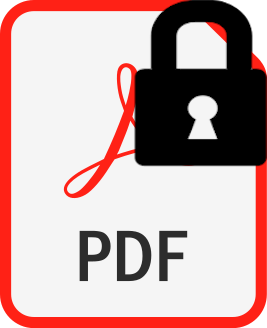 |
| 2. |
Sabbagh Mojaveryazdi F., Zakrzewska A., Rybak D., Król J., Abdi A.♦, Nakielski P., Pierini F., Transdermal Drug Delivery Systems Powered by Artificial Intelligence,
ADVANCED HEALTHCARE MATERIALS, ISSN: 2192-2659, DOI: 10.1002/adhm.202503030, pp.e03030-1-24, 2025 Abstract:
Transdermal drug delivery systems (TDDSs) offer non-invasive therapy but face persistent challenges. Artificial intelligence (AI) transforms TDDSs by leveraging machine learning (ML) and predictive analytics to address these barriers. ML models predict drug entrapment with 93.0% accuracy, streamlining development. AI enhances transdermal patch formulations by forecasting drug release kinetics, skin penetration, and stability, minimizing reliance on costly clinical trials. Through virtual screening, AI identifies novel drug candidates and permeation enhancers, accelerating innovation. In microneedle systems, AI optimizes geometries, materials, and drug loading, improving precision and personalization. AI-integrated biosensors enable real-time monitoring, supporting adaptive dosing tailored to individual physiological profiles. Compared to traditional modeling, AI provides superior accuracy and scalability, handling complex datasets to reveal non-linear relationships. Despite challenges like data quality and privacy concerns, AI's integration with 3-dimensional printing and stimuli-responsive materials drives the development of personalized, efficient transdermal therapies. This perspective highlights AI's critical role in advancing therapeutic efficacy and patient-centric care in TDDSs, uniquely combining predictive modeling with real-time monitoring to envision next-generation personalized transdermal delivery systems. Affiliations:
| Sabbagh Mojaveryazdi F. | - | IPPT PAN | | Zakrzewska A. | - | IPPT PAN | | Rybak D. | - | IPPT PAN | | Król J. | - | IPPT PAN | | Abdi A. | - | New Jersey Institute of Technology (US) | | Nakielski P. | - | IPPT PAN | | Pierini F. | - | IPPT PAN |
|  |
| 3. |
Pruchniewski M.♦, Strojny-Cieślak B.♦, Nakielski P., Zawadzka K.♦, Urbańska K.♦, Rybak D., Zakrzewska A., Grodzik M.♦, Sawosz E.♦, Electrospun poly-(L-lactide) scaffold enriched with GO-AuNPs nanocomposite stimulates skin tissue reconstruction via enhanced cell adhesion and controlled growth factors release,
MATERIALS AND DESIGN, ISSN: 0264-1275, DOI: 10.1016/j.matdes.2025.113713, Vol.251, pp.113713-1-18, 2025 Abstract:
The disruption of homeostasis in the tissue microenvironment following skin injury necessitates the provision of a supportive niche for cells to facilitate the restoration of functional tissue. A meticulously engineered cell-scaffold biointerface is essential for eliciting the desired cellular responses that underpin therapeutic efficacy. To address this, we fabricated an electrospun poly-(L-lactide) (PLLA) cell scaffold enriched with graphene oxide (GO) and gold nanoparticles (AuNPs). Comprehensive characterization assessed the scaffolds’ microstructural, elemental, thermal, and mechanical properties. In vitro investigations evaluated the biocompatibility, adhesive and regenerative capabilities of the scaffolds utilizing human keratinocytes (HEKa), fibroblasts (HFFF2), and reconstructed epidermis (EpiDerm™) models. The results demonstrated that the incorporation of the GO-Au composite substantially altered the nanotopography and mechanical properties of the PLLA fibers. Cells effectively colonized the PLLA + GO-Au scaffold while preserving their structural morphology. Furthermore, PLLA + GO-Au treatment resulted in increased epidermal thickness and reduced tissue porosity. The scaffold exerted a significant influence on actin cytoskeleton architecture, facilitating cell adhesion through the upregulation of integrins, E-cadherin, and β-catenin. Keratinocytes exhibited enhanced secretion of growth factors (AREG, bFGF, EGF, EGF R), while fibroblast secretion remained stable. These findings endorse the scaffold’s potential for regulating cellular fate and preventing hypertrophic tissue formation in skin tissue engineering. Keywords:
Wound healing,Electrospun fibers,Graphene oxide,Gold nanoparticles,Proregenerative cell scaffold Affiliations:
| Pruchniewski M. | - | other affiliation | | Strojny-Cieślak B. | - | other affiliation | | Nakielski P. | - | IPPT PAN | | Zawadzka K. | - | other affiliation | | Urbańska K. | - | other affiliation | | Rybak D. | - | IPPT PAN | | Zakrzewska A. | - | IPPT PAN | | Grodzik M. | - | other affiliation | | Sawosz E. | - | Warsaw University of Life Sciences (PL) |
| 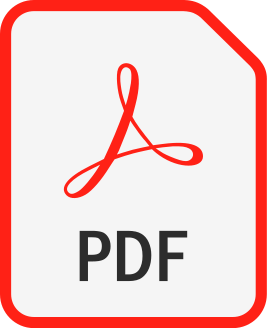 |
| 4. |
Krysiak Z., Rybak D., Kurniawan T., Zakrzewska A., Pierini F., Light-Driven Structural Detachment and Controlled Release in Smart Antibacterial Multilayer Platforms,
Macromolecular Materials and Engineering, ISSN: 1438-7492, DOI: 10.1002/mame.202400462, Vol.310, No.7, pp.2400462-1-9, 2025 Abstract:
Smart materials, especially light-responsive, have become a key research area due to their tunable properties. It is related to the ability to undergo physical or chemical changes in response to external stimuli. Among them, photothermal responsive materials have attracted great interest. This study focuses on the development of a multilayer system (MS) consisting of benzophenone-modified polydimethylsiloxane (PDMS) ring and a thermo-responsive core made of poly(N-isopropylacrylamide-co-N-isopropylomethacrylamide) (P(NIPAAm-co-NIPMAAm)), gelatin, and gelatin methacrylate (GelMA). The system utilizes the thermal sensitivity of P(NIPAAm-co-NIPMAAm) and the photothermal effect of gold nanorods (AuNRs) to achieve an on-demand controlled release mechanism within 6 min of near-infrared (NIR) light irradiation. The mechanical properties investigated in the compression test show significant improvement in MS, reaching 60 times greater value than the material without a PDMS ring. In addition, NIR irradiation for 15 min activated the antimicrobial properties, eliminating 99.9% of E. Coli and 100% of S. Aureus, thus presenting pathogen eradication. This platform provides a versatile methodology for developing next-generation smart materials, advanced delivery mechanisms, and multifunctional nanostructured composites. This work highlights the potential of photosensitive materials to revolutionize the field of soft robotics, optics and actuators, and on-demand systems by providing precise control over release dynamics and improved material properties. Affiliations:
| Krysiak Z. | - | IPPT PAN | | Rybak D. | - | IPPT PAN | | Kurniawan T. | - | IPPT PAN | | Zakrzewska A. | - | IPPT PAN | | Pierini F. | - | IPPT PAN |
|  |
| 5. |
Nakielski P., Kosik-Kozioł A., Rinoldi C., Rybak D., Namdev M.♦, Jacob W.♦, Lehmann T.♦, Głowacki M.♦, Bogusz S.♦, Rzepna M.♦, Marinelli M.♦, Lanzi M.♦, Dror S.♦, Sarah M.♦, Dmitriy S.♦, Pierini F., Injectable PLGA Microscaffolds with Laser-Induced Enhanced Microporosity for Nucleus Pulposus Cell Delivery,
Small, ISSN: 1613-6810, DOI: 10.1002/smll.202404963, pp.2404963-1-15, 2024 Abstract:
Intervertebral disc (IVD) degeneration is a leading cause of lower back pain (LBP). Current treatments primarily address symptoms without halting the degenerative process. Cell transplantation offers a promising approach for early-stage IVD degeneration, but challenges such as cell viability, retention, and harsh host environments limit its efficacy. This study aimed to compare the injectability and biocompatibility of human nucleus pulposus cells (hNPC) attached to two types of microscaffolds designed for minimally invasive delivery to IVD. Microscaffolds are developed from poly(lactic-co-glycolic acid) (PLGA) using electrospinning and femtosecond laser structuration. These microscaffolds are tested for their physical properties, injectability, and biocompatibility. This study evaluates cell adhesion, proliferation, and survival in vitro and ex vivo within a hydrogel-based nucleus pulposus model. The microscaffolds demonstrate enhanced surface architecture, facilitating cell adhesion and proliferation. Laser structuration improved porosity, supporting cell attachment and extracellular matrix deposition. Injectability tests show that microscaffolds can be delivered through small-gauge needles with minimal force, maintaining high cell viability. The findings suggest that laser-structured PLGA microscaffolds are viable for minimally invasive cell delivery. These microscaffolds enhance cell viability and retention, offering potential improvements in the therapeutic efficiency of cell-based treatments for discogenic LBP. Affiliations:
| Nakielski P. | - | IPPT PAN | | Kosik-Kozioł A. | - | IPPT PAN | | Rinoldi C. | - | IPPT PAN | | Rybak D. | - | IPPT PAN | | Namdev M. | - | other affiliation | | Jacob W. | - | other affiliation | | Lehmann T. | - | other affiliation | | Głowacki M. | - | Jagiellonian University (PL) | | Bogusz S. | - | other affiliation | | Rzepna M. | - | other affiliation | | Marinelli M. | - | other affiliation | | Lanzi M. | - | University of Bologna (IT) | | Dror S. | - | other affiliation | | Sarah M. | - | other affiliation | | Dmitriy S. | - | other affiliation | | Pierini F. | - | IPPT PAN |
|  |
| 6. |
Kosik-Kozioł A., Nakielski P., Rybak D., Frączek W.♦, Rinoldi C., Lanzi M.♦, Grodzik M.♦, Pierini F., Adhesive Antibacterial Moisturizing Nanostructured Skin Patch for Sustainable Development of Atopic Dermatitis Treatment in Humans,
ACS Applied Materials and Interfaces, ISSN: 1944-8244, DOI: 10.1021/acsami.4c06662, Vol.16, No.25, pp.32128-32146, 2024 Abstract:
Atopic dermatitis (AD) is a chronic inflammatory skin disease with a complex etiology that lacks effective treatment. The therapeutic goals include alleviating symptoms, such as moisturizing and applying antibacterial and anti-inflammatory medications. Hence, there is an urgent need to develop a patch that effectively alleviates most of the AD symptoms. In this study, we employed a “green” cross-linking approach of poly(vinyl alcohol) (PVA) using glycerol, and we combined it with polyacrylonitrile (PAN) to fabricate core–shell (CS) nanofibers through electrospinning. Our designed structure offers multiple benefits as the core ensures controlled drug release and increases the strength of the patch, while the shell provides skin moisturization and exudate absorption. The efficient PVA cross-linking method facilitates the inclusion of sensitive molecules such as fermented oils. In vitro studies demonstrate the patches’ exceptional biocompatibility and efficacy in minimizing cell ingrowth into the CS structure containing argan oil, a property highly desirable for easy removal of the patch. Histological examinations conducted on an ex vivo model showed the nonirritant properties of developed patches. Furthermore, the eradication of Staphylococcus aureus bacteria confirms the potential use of CS nanofibers loaded with argan oil or norfloxacin, separately, as an antibacterial patch for infected AD wounds. In vivo patch application studies on patients, including one with AD, demonstrated ideal patches’ moisturizing effect. This innovative approach shows significant promise in enhancing life quality for AD sufferers by improving skin hydration and avoiding infections. Keywords:
atopic dermatitis, core−shell electrospun nanofibers, antibacterial, mucoadhesive, moisturizing patch Affiliations:
| Kosik-Kozioł A. | - | IPPT PAN | | Nakielski P. | - | IPPT PAN | | Rybak D. | - | IPPT PAN | | Frączek W. | - | other affiliation | | Rinoldi C. | - | IPPT PAN | | Lanzi M. | - | University of Bologna (IT) | | Grodzik M. | - | other affiliation | | Pierini F. | - | IPPT PAN |
|  |
| 7. |
Rybak D., Jingtao D.♦, Nakielski P., Rinoldi C., Kosik-Kozioł A., Zakrzewska A., Haoyang W.♦, Jing L.♦, Li X.♦, Yu Y.♦, Ding B.♦, Pierini F., NIR-Light Activable 3D Printed Platform Nanoarchitectured with Electrospun Plasmonic Filaments for On Demand Treatment of Infected Wounds,
ADVANCED HEALTHCARE MATERIALS, ISSN: 2192-2659, DOI: 10.1002/adhm.202404274, pp.2404274-1-17, 2024 Abstract:
Bacterial infections can lead to severe complications that adversely affect wound healing. Thus, the development of effective wound dressings has become a major focus in the biomedical field, as current solutions remain insufficient for treating complex, particularly chronic wounds. Designing an optimal environment for healing and tissue regeneration is essential. This study aims to optimize a multi-functional 3D printed hydrogel for infected wounds. A dexamethasone (DMX)-loaded electrospun mat, incorporated with gold nanorods (AuNRs), is structured into short filaments (SFs). The SFs are 3D printed into gelatine methacrylate (GelMA) and sodium alginate (SA) scaffold. The photo-responsive AuNRs within SFs significantly enhanced DXM release when exposed to near-infrared (NIR) light. The material exhibits excellent photothermal properties, biocompatibility, and antibacterial activity under NIR irradiation, effectively eliminating Staphylococcus aureus and Escherichia coli in vitro. In vivo, material combined with NIR light treatment facilitate infectes wound healing, killing S. aureus bacteria, reduced inflammation, and induced vascularization. The final materials’ shape can be adjusted to the skin defect, release the anti-inflammatory DXM on-demand, provide antimicrobial protection, and accelerate the healing of chronic wounds. Affiliations:
| Rybak D. | - | IPPT PAN | | Jingtao D. | - | other affiliation | | Nakielski P. | - | IPPT PAN | | Rinoldi C. | - | IPPT PAN | | Kosik-Kozioł A. | - | IPPT PAN | | Zakrzewska A. | - | IPPT PAN | | Haoyang W. | - | other affiliation | | Jing L. | - | other affiliation | | Li X. | - | Donghua University (CN) | | Yu Y. | - | other affiliation | | Ding B. | - | Donghua University (CN) | | Pierini F. | - | IPPT PAN |
|  |
| 8. |
Shah Syed A., Sohail M.♦, Nakielski P., Rinoldi C., Zargarian Seyed S., Kosik-Kozioł A., Yasamin Z., Ali Haghighat Bayan M., Zakrzewska A., Rybak D., Bartolewska M., Pierini F., Integrating Micro- and Nanostructured Platforms and Biological Drugs to Enhance Biomaterial-Based Bone Regeneration Strategies,
BIOMACROMOLECULES, ISSN: 1525-7797, DOI: 10.1021/acs.biomac.4c01133, pp.A-W, 2024 Abstract:
Bone defects resulting from congenital anomalies and trauma pose significant clinical challenges for orthopedics surgeries, where bone tissue engineering (BTE) aims to address these challenges by repairing defects that fail to heal spontaneously. Despite numerous advances, BTE still faces several challenges, i.e., difficulties in detecting and tracking implanted cells, high costs, and regulatory approval hurdles. Biomaterials promise to revolutionize bone grafting procedures, heralding a new era of regenerative medicine and advancing patient outcomes worldwide. Specifically, novel bioactive biomaterials have been developed that promote cell adhesion, proliferation, and differentiation and have osteoconductive and osteoinductive characteristics, stimulating tissue regeneration and repair, particularly in complex skeletal defects caused by trauma, degeneration, and neoplasia. A wide array of biological therapeutics for bone regeneration have emerged, drawing from the diverse spectrum of gene therapy, immune cell interactions, and RNA molecules. This review will provide insights into the current state and potential of future strategies for bone regeneration. Affiliations:
| Shah Syed A. | - | IPPT PAN | | Sohail M. | - | other affiliation | | Nakielski P. | - | IPPT PAN | | Rinoldi C. | - | IPPT PAN | | Zargarian Seyed S. | - | IPPT PAN | | Kosik-Kozioł A. | - | IPPT PAN | | Yasamin Z. | - | IPPT PAN | | Ali Haghighat Bayan M. | - | IPPT PAN | | Zakrzewska A. | - | IPPT PAN | | Rybak D. | - | IPPT PAN | | Bartolewska M. | - | IPPT PAN | | Pierini F. | - | IPPT PAN |
|  |
| 9. |
Rybak D., Rinoldi C., Nakielski P., Du J.♦, Haghighat Bayan Mohammad A., Zargarian S.S., Pruchniewski M.♦, Li X.♦, Strojny-Cieślak B.♦, Ding B.♦, Pierini F., Injectable and self-healable nano-architectured hydrogel for NIR-light responsive chemo- and photothermal bacterial eradication,
JOURNAL OF MATERIALS CHEMISTRY B , ISSN: 2050-7518, DOI: 10.1039/D3TB02693K, Vol.12, No.7, pp.1905-1925, 2024 Abstract:
Hydrogels with multifunctional properties activated at specific times have gained significant attention in the biomedical field. As bacterial infections can cause severe complications that negatively impact wound repair, herein, we present the development of a stimuli-responsive, injectable, and in situ-forming hydrogel with antibacterial, self-healing, and drug-delivery properties. In this study, we prepared a Pluronic F-127 (PF127) and sodium alginate (SA)-based hydrogel that can be targeted to a specific tissue via injection. The PF127/SA hydrogel was incorporated with polymeric short-filaments (SFs) containing an anti-inflammatory drug – ketoprofen, and stimuli-responsive polydopamine (PDA) particles. The hydrogel, after injection, could be in situ gelated at the body temperature, showing great in vitro stability and self-healing ability after 4 h of incubation. The SFs and PDA improved the hydrogel injectability and compressive strength. The introduction of PDA significantly accelerated the KET release under near-infrared light exposure and extended its release validity period. The excellent composites’ photo-thermal performance led to antibacterial activity against representative Gram-positive and Gram-negative bacteria, resulting in 99.9% E. coli and S. aureus eradication after 10 min of NIR light irradiation. In vitro, fibroblast L929 cell studies confirmed the materials’ biocompatibility and paved the way toward further in vivo and clinical application of the system for chronic wound treatments. Affiliations:
| Rybak D. | - | IPPT PAN | | Rinoldi C. | - | IPPT PAN | | Nakielski P. | - | IPPT PAN | | Du J. | - | University of California (US) | | Haghighat Bayan Mohammad A. | - | IPPT PAN | | Zargarian S.S. | - | IPPT PAN | | Pruchniewski M. | - | other affiliation | | Li X. | - | Donghua University (CN) | | Strojny-Cieślak B. | - | other affiliation | | Ding B. | - | Donghua University (CN) | | Pierini F. | - | IPPT PAN |
|  |
| 10. |
Haghighat Bayan M.A., Rinoldi C., Rybak D., Zargarian S.S., Zakrzewska A., Miler O., Põhako-Palu K.♦, Zhang S.♦, Stobnicka-Kupiec A.♦, Górny Rafał L.♦, Nakielski P., Kogermann K.♦, De Sio L.♦, Ding B.♦, Pierini F., Engineering surgical face masks with photothermal and photodynamic plasmonic nanostructures for enhancing filtration and on-demand pathogen eradication,
Biomaterials Science, ISSN: 2047-4849, DOI: 10.1039/d3bm01125a, Vol.12, No.4, pp.949-963, 2024 Abstract:
The shortage of face masks and the lack of antipathogenic functions has been significant since the recent pandemic's inception. Moreover, the disposal of an enormous number of contaminated face masks not only carries a significant environmental impact but also escalates the risk of cross-contamination. This study proposes a strategy to upgrade available surgical masks into antibacterial masks with enhanced particle and bacterial filtration. Plasmonic nanoparticles can provide photodynamic and photothermal functionalities for surgical masks. For this purpose, gold nanorods act as on-demand agents to eliminate pathogens on the surface of the masks upon near-infrared light irradiation. Additionally, the modified masks are furnished with polymer electrospun nanofibrous layers. These electrospun layers can enhance the particle and bacterial filtration efficiency, not at the cost of the pressure drop of the mask. Consequently, fabricating these prototype masks could be a practical approach to upgrading the available masks to alleviate the environmental toll of disposable face masks. Affiliations:
| Haghighat Bayan M.A. | - | IPPT PAN | | Rinoldi C. | - | IPPT PAN | | Rybak D. | - | IPPT PAN | | Zargarian S.S. | - | IPPT PAN | | Zakrzewska A. | - | IPPT PAN | | Miler O. | - | IPPT PAN | | Põhako-Palu K. | - | other affiliation | | Zhang S. | - | other affiliation | | Stobnicka-Kupiec A. | - | other affiliation | | Górny Rafał L. | - | other affiliation | | Nakielski P. | - | IPPT PAN | | Kogermann K. | - | other affiliation | | De Sio L. | - | Sapienza University of Rome (IT) | | Ding B. | - | Donghua University (CN) | | Pierini F. | - | IPPT PAN |
|  |
| 11. |
Haghighat Bayan M.A., Rinoldi C., Kosik-Kozioł A., Bartolewska M., Rybak D., Zargarian S., Shah S., Krysiak Z., Zhang S.♦, Lanzi M.♦, Nakielski P., Ding B.♦, Pierini F., Solar-to-NIR Light Activable PHBV/ICG Nanofiber-Based Face Masks with On-Demand Combined Photothermal and Photodynamic Antibacterial Properties,
Advanced Materials Technologies, ISSN: 2365-709X, DOI: 10.1002/admt.202400450, pp.2400450-1-18, 2024 Abstract:
Hierarchical nanostructures fabricate by electrospinning in combination with light-responsive agents offer promising scenarios for developing novel activable antibacterial interfaces. This study introduces an innovative antibacterial face mask developed from poly(3-hydroxybutyrate-co-3-hydroxyvalerate) (PHBV) nanofibers integrated with indocyanine green (ICG), targeting the urgent need for effective antimicrobial protection for community health workers. The research focuses on fabricating and characterizing this nanofibrous material, evaluating the mask's mechanical and chemical properties, investigating its particle filtration, and assessing antibacterial efficacy under photothermal conditions for reactive oxygen species (ROS) generation. The PHBV/ICG nanofibers are produced using an electrospinning process, and the nanofibrous construct's morphology, structure, and photothermal response are investigated. The antibacterial efficacy of the nanofibers is tested, and substantial bacterial inactivation under both near-infrared (NIR) and solar irradiation is demonstrated due to the photothermal response of the nanofibers. The material's photothermal response is further analyzed under cyclic irradiation to simulate real-world conditions, confirming its durability and consistency. This study highlights the synergistic impact of PHBV and ICG in enhancing antibacterial activity, presenting a biocompatible and environmentally friendly solution. These findings offer a promising path for developing innovative face masks that contribute significantly to the field of antibacterial materials and solve critical public health challenges. Affiliations:
| Haghighat Bayan M.A. | - | IPPT PAN | | Rinoldi C. | - | IPPT PAN | | Kosik-Kozioł A. | - | IPPT PAN | | Bartolewska M. | - | IPPT PAN | | Rybak D. | - | IPPT PAN | | Zargarian S. | - | IPPT PAN | | Shah S. | - | IPPT PAN | | Krysiak Z. | - | IPPT PAN | | Zhang S. | - | other affiliation | | Lanzi M. | - | University of Bologna (IT) | | Nakielski P. | - | IPPT PAN | | Ding B. | - | Donghua University (CN) | | Pierini F. | - | IPPT PAN |
|  |
| 12. |
Zargarian S., Kupikowska-Stobba B., Kosik-Kozioł A., Bartolewska M., Zakrzewska A., Rybak D., Bochenek K., Osial M., Pierini F., Light-responsive biowaste-derived and bio-inspired textiles: Dancing between bio-friendliness and antibacterial functionality,
Materials Today Chemistry, ISSN: 2468-5194, DOI: 10.1016/j.mtchem.2024.102281, Vol.41, pp.102281-1-15, 2024 Abstract:
Functional antibacterial textiles fabricated from a hybrid of organic waste-derived and bio-inspired materials offer sustainable solutions for preventing microbial infections. In this work, we developed a novel antibacterial textile created through the valorization of spent coffee grounds (SCG). Electrospinning and electrospraying techniques were employed to integrate the biowaste within a polymeric nanofiber matrix, ensuring uniform particle distribution and providing structural support for enhanced applicability. Modification with polydopamine (PDA) significantly enhanced the textile's photothermal performance. Specific attention was paid to understanding the relation between temperature change and key variables, including the surrounding liquid volume, textile layer stacking, and applied laser power. Developed platforms demonstrated excellent photothermal stability. While the SCG-based textile demonstrated exceptional biocompatibility, the PDA-modified textile effectively eradicated Staphylococcus aureus (S. aureus) under near-infrared (NIR) irradiation. The developed textiles in our work demonstrate a dynamic balance between biocompatibility and on-demand antibacterial functionality, offering adaptable solutions in accordance with the desired application. Keywords:
Organic waste valorization, Spent coffee grounds, Micro-nanostructured textiles, Bio-inspired photothermal agents, Polydopamine, Antibacterial textiles Affiliations:
| Zargarian S. | - | IPPT PAN | | Kupikowska-Stobba B. | - | IPPT PAN | | Kosik-Kozioł A. | - | IPPT PAN | | Bartolewska M. | - | IPPT PAN | | Zakrzewska A. | - | IPPT PAN | | Rybak D. | - | IPPT PAN | | Bochenek K. | - | IPPT PAN | | Osial M. | - | IPPT PAN | | Pierini F. | - | IPPT PAN |
|  |
| 13. |
Nakielski P., Rybak D., Jezierska-Woźniak K.♦, Rinoldi C., Sinderewicz E.♦, Staszkiewicz-Chodor J.♦, Haghighat Bayan M.A., Czelejewska W.♦, Urbanek-Świderska O., Kosik-Kozioł A., Barczewska M.♦, Skomorowski M.♦, Holak P.♦, Lipiński S.♦, Maksymowicz W.♦, Pierini F., Minimally invasive intradiscal delivery of BM-MSCs via fibrous microscaffold carriers,
ACS Applied Materials and Interfaces, ISSN: 1944-8244, DOI: 10.1021/acsami.3c11710, pp.1-16, 2023 Abstract:
Current treatments of degenerated intervertebral discs often provide only temporary relief or address specific causes, necessitating the exploration of alternative therapies. Cell-based regenerative approaches showed promise in many clinical trials, but
limitations such as cell death during injection and a harsh disk environment hinder their effectiveness. Injectable microscaffolds offer a solution by providing a supportive microenvironment for cell delivery and enhancing bioactivity. This study evaluated the
safety and feasibility of electrospun nanofibrous microscaffolds modified with chitosan (CH) and chondroitin sulfate (CS) for treating degenerated NP tissue in a large animal model. The microscaffolds facilitated cell attachment and acted as an effective delivery system, preventing cell leakage under a high disc pressure. Combining microscaffolds with bone marrow-derived mesenchymal stromal cells demonstrated no cytotoxic effects and proliferation over the entire microscaffolds. The administration of cells attached to microscaffolds into the NP positively influenced the regeneration process of the intervertebral disc. Injectable poly(L-lactide-co-glycolide) and poly(L-lactide) microscaffolds enriched with CH or CS, having a fibrous structure, showed the potential to promote intervertebral disc regeneration. These features collectively address critical challenges in the fields of tissue engineering and regenerative medicine, particularly in the context of intervertebral disc degeneration. Keywords:
microscaffolds,cell carriers,injectable biomaterials,intervertebral disc,laser micromachining,electrospinning Affiliations:
| Nakielski P. | - | IPPT PAN | | Rybak D. | - | IPPT PAN | | Jezierska-Woźniak K. | - | other affiliation | | Rinoldi C. | - | IPPT PAN | | Sinderewicz E. | - | other affiliation | | Staszkiewicz-Chodor J. | - | other affiliation | | Haghighat Bayan M.A. | - | IPPT PAN | | Czelejewska W. | - | other affiliation | | Urbanek-Świderska O. | - | IPPT PAN | | Kosik-Kozioł A. | - | IPPT PAN | | Barczewska M. | - | University of Warmia and Mazury in Olsztyn (PL) | | Skomorowski M. | - | other affiliation | | Holak P. | - | other affiliation | | Lipiński S. | - | other affiliation | | Maksymowicz W. | - | University of Warmia and Mazury in Olsztyn (PL) | | Pierini F. | - | IPPT PAN |
|  |
| 14. |
Rybak D., Su Y.♦, Li Y.♦, Ding B.♦, Lv X.♦, Li Z.♦, Yeh Y.♦, Nakielski P., Rinoldi C., Pierini F., Dodda Jagan M.♦, Evolution of nanostructured skin patches towards multifunctional wearable platforms for biomedical applications,
NANOSCALE, ISSN: 2040-3364, DOI: 10.1039/D3NR00807J, Vol.15, No.18, pp.8044-8083, 2023 Abstract:
Recent advances in the field of skin patches have promoted the development of wearable and implantable bioelectronics for long-term, continuous healthcare management and targeted therapy. However, the design of electronic skin (e-skin) patches with stretchable components is still challenging and requires an in-depth understanding of the skin-attachable substrate layer, functional biomaterials and advanced self-powered electronics. In this comprehensive review, we present the evolution of skin patches from functional nanostructured materials to multi-functional and stimuli-responsive patches towards flexible substrates and emerging biomaterials for e-skin patches, including the material selection, structure design and promising applications. Stretchable sensors and self-powered e-skin patches are also discussed, ranging from electrical stimulation for clinical procedures to continuous health monitoring and integrated systems for comprehensive healthcare management. Moreover, an integrated energy harvester with bioelectronics enables the fabrication of self-powered electronic skin patches, which can effectively solve the energy supply and overcome the drawbacks induced by bulky battery-driven devices. However, to realize the full potential offered by these advancements, several challenges must be addressed for next-generation e-skin patches. Finally, future opportunities and positive outlooks are presented on the future directions of bioelectronics. It is believed that innovative material design, structure engineering, and in-depth study of fundamental principles can foster the rapid evolution of electronic skin patches, and eventually enable self-powered close-looped bioelectronic systems to benefit mankind. Affiliations:
| Rybak D. | - | IPPT PAN | | Su Y. | - | other affiliation | | Li Y. | - | other affiliation | | Ding B. | - | Donghua University (CN) | | Lv X. | - | other affiliation | | Li Z. | - | other affiliation | | Yeh Y. | - | other affiliation | | Nakielski P. | - | IPPT PAN | | Rinoldi C. | - | IPPT PAN | | Pierini F. | - | IPPT PAN | | Dodda Jagan M. | - | other affiliation |
|  |
| 15. |
Haghighat Bayan M.A., Dias Yasmin J.♦, Rinoldi C., Nakielski P., Rybak D., Truong Yen B.♦, Yarin A.♦, Pierini F., Near-infrared light activated core-shell electrospun nanofibers decorated with photoactive plasmonic nanoparticles for on-demand smart drug delivery applications,
Journal of Polymer Science, ISSN: 2642-4169, DOI: 10.1002/pol.20220747, Vol.61, No.7, pp.521-533, 2023 Abstract:
Over the last few years, traditional drug delivery systems (DDSs) have been transformed into smart DDSs. Recent advancements in biomedical nanotech-nology resulted in introducing stimuli-responsiveness to drug vehicles. Nano-
platforms can enhance drug release efficacy while reducing the side effects of drugs by taking advantage of the responses to specific internal or external stim-uli. In this study, we developed an electrospun nanofibrous photo-responsive DDSs. The photo-responsivity of the platform enables on-demand elevated drug release. Furthermore, it can provide a sustained release profile and pre-vent burst release and high concentrations of drugs. A coaxial electrospinning setup paired with an electrospraying technique is used to fabricate core-shell PVA-PLGA nanofibers decorated with plasmonic nanoparticles. The fabricated
nanofibers have a hydrophilic PVA and Rhodamine-B (RhB) core, while the shell is hydrophobic PLGA decorated with gold nanorods (Au NRs). The presence of plasmonic nanoparticles enables the platform to twice the amount of drug release besides exhibiting a long-term release. Investigations into the photo-responsive release mechanism demonstrate the system's potential as a “smart” drug delivery platform. Keywords:
electrospun core-shell nanofibers,NIR-light activation,on-demand drug release,plasmonic nanoparticles,stimuli-responsive nanomaterials Affiliations:
| Haghighat Bayan M.A. | - | IPPT PAN | | Dias Yasmin J. | - | other affiliation | | Rinoldi C. | - | IPPT PAN | | Nakielski P. | - | IPPT PAN | | Rybak D. | - | IPPT PAN | | Truong Yen B. | - | other affiliation | | Yarin A. | - | Technion-Israel Institute of Technology (IL) | | Pierini F. | - | IPPT PAN |
|  |
| 16. |
Nakielski P., Rinoldi C., Pruchniewski M.♦, Pawłowska S., Gazińska M.♦, Strojny B.♦, Rybak D., Jezierska-Woźniak K.♦, Urbanek O., Denis P., Sinderewicz E.♦, Czelejewska W.♦, Staszkiewicz-Chodor J.♦, Grodzik M.♦, Ziai Y., Barczewska M.♦, Maksymowicz W.♦, Pierini F., Laser-assisted fabrication of injectable nanofibrous cell carriers,
Small, ISSN: 1613-6810, DOI: 10.1002/smll.202104971, Vol.18, No.2, pp.2104971-1-18, 2022 Abstract:
The use of injectable biomaterials for cell delivery is a rapidly expanding field which may revolutionize the medical treatments by making them less invasive. However, creating desirable cell carriers poses significant challenges to the clinical implementation of cell-based therapeutics. At the same time, no method has been developed to produce injectable microscaffolds (MSs) from electrospun materials. Here the fabrication of injectable electrospun nanofibers is reported on, which retain their fibrous structure to mimic the extracellular matrix. The laser-assisted micro-scaffold fabrication has produced tens of thousands of MSs in a short time. An efficient attachment of cells to the surface and their proliferation is observed, creating cell-populated MSs. The cytocompatibility assays proved their biocompatibility, safety, and potential as cell carriers. Ex vivo results with the use of bone and cartilage tissues proved that NaOH hydrolyzed and chitosan functionalized MSs are compatible with living tissues and readily populated with cells. Injectability studies of MSs showed a high injectability rate, while at the same time, the force needed to eject the load is no higher than 25 N. In the future, the produced MSs may be studied more in-depth as cell carriers in minimally invasive cell therapies and 3D bioprinting applications. Affiliations:
| Nakielski P. | - | IPPT PAN | | Rinoldi C. | - | IPPT PAN | | Pruchniewski M. | - | other affiliation | | Pawłowska S. | - | IPPT PAN | | Gazińska M. | - | other affiliation | | Strojny B. | - | other affiliation | | Rybak D. | - | IPPT PAN | | Jezierska-Woźniak K. | - | other affiliation | | Urbanek O. | - | IPPT PAN | | Denis P. | - | IPPT PAN | | Sinderewicz E. | - | other affiliation | | Czelejewska W. | - | other affiliation | | Staszkiewicz-Chodor J. | - | other affiliation | | Grodzik M. | - | other affiliation | | Ziai Y. | - | IPPT PAN | | Barczewska M. | - | University of Warmia and Mazury in Olsztyn (PL) | | Maksymowicz W. | - | University of Warmia and Mazury in Olsztyn (PL) | | Pierini F. | - | IPPT PAN |
|  |






















